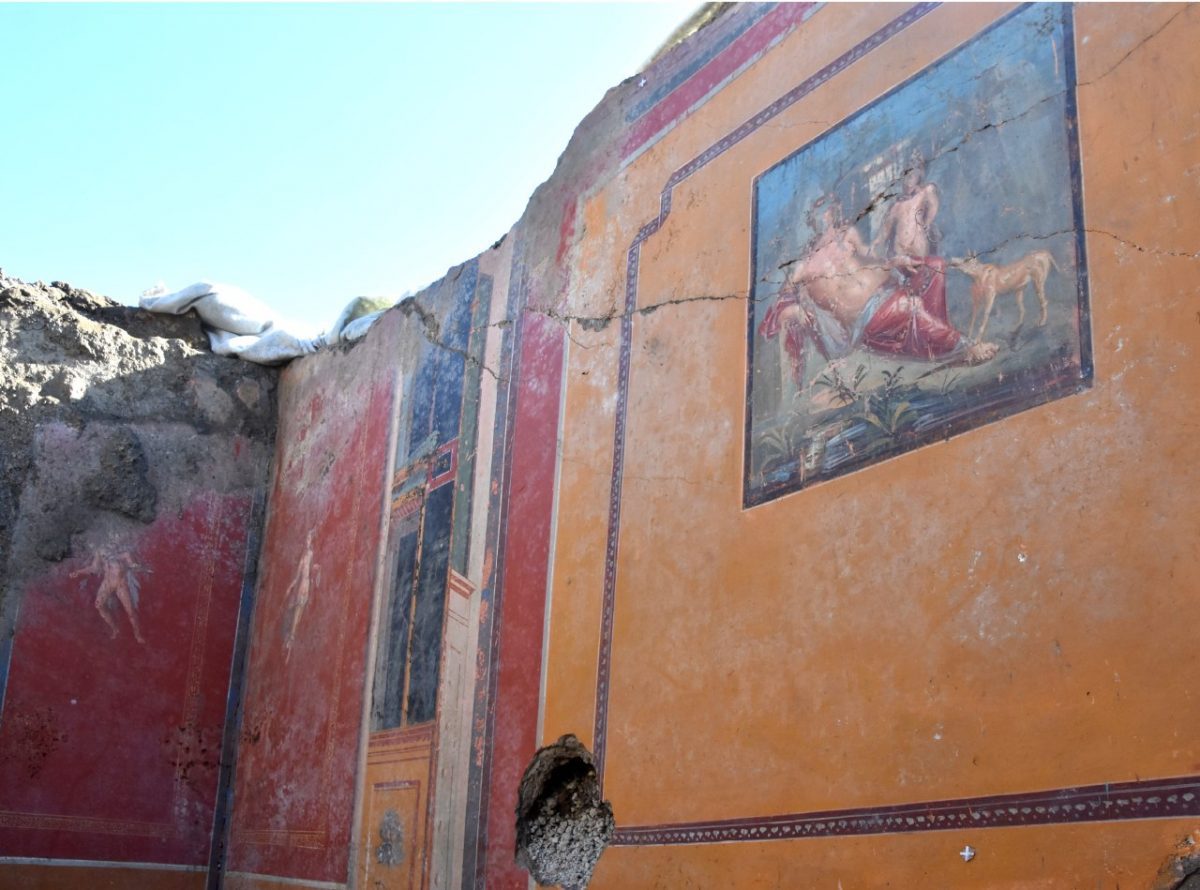Ancient Fresco of Mythical Narcissus Found in Pompeii

Excavations in a lavishly decorated house in ancient Pompeii have yielded a Valentine's Day-worthy discovery: a fresco of Narcissus, the mythical hunter who fell in love with his own reflection.
According to Greek mythology, Narcissus — the son of the river god Cephissus and the nymph Liriope — was a handsome fellow. But given that he wasted away after gazing at his reflection in a pool of water, his name is now synonymous with self-absorption.
Even so, his likeness is often portrayed in paintings found in Pompeii, the Roman city that met its end when Mount Vesuvius erupted in A.D. 79. And the new find, announced today (Feb. 14) by the Archeological Park of Pompeii, is a stunning example of how the city's artisans lionized the dapper dude. [Preserved Pompeii: Photos Show a City in Ash]
Archaeologists found the fresco in an atrium of a house that made headlines in November 2018, after an erotic painting was found there. That painting depicted the Roman god Jupiter (disguised as a swan) as he seduced Leda, the legendary queen of Sparta.
The two frescos were found in separate rooms, but clearly whoever decorated the house was a connoisseur of sensual art, the Archeological Park of Pompeii suggested, as a painting of Priapus, a god of fertility, was also found on the walls.
The walls in the Leda room are also decorated with floral embellishments, griffins with cornucopia, winged cupids, still lifes and scenes of animals fighting each other, the Archeological Park of Pompeii reported. Unfortunately, the ceiling in this room collapsed when Vesuvius spewed out lapilli — that is, rock fragments — during its eruption. But restorers are working to reconstruct the house, the Archeological Park of Pompeii said.
In the atrium where the Narcissus fresco was discovered, archaeologists could still see traces of stairs that led upstairs. Further excavations uncovered a dozen glass containers, eight amphora jars and a bronze funnel in the storage space under the stairs. A bronze situla (an ornate bucket) was also found in the atrium.
Sign up for the Live Science daily newsletter now
Get the world’s most fascinating discoveries delivered straight to your inbox.
"The extraordinary discoveries of this site continue," archaeologist Massimo Osanna, the director general of the Archaeological Park of Pompeii, said in the statement. "The scene of the myth of Narcissus, well known and present elsewhere at Pompeii, is presented in the atrium of the house. The entire room is pervaded by the theme of the joy of living, of beauty and of vanity, which is further underlined by the figures of maenads [female followers of Dionysus] and satyrs who accompanied visitors inside the public part of the house, as though part of a Dionysian retinue."
Osanna added that "this decoration was intentionally luxurious, and probably dated to the last years of the colony, as indicated by the extraordinary preservation state of the colors."
- 24 Amazing Archaeological Discoveries
- In Photos: A Journey Through Early Christian Rome
- Photos: Ancient Basilica Found Beneath Turkey Lake
Originally published on Live Science.

Laura is the archaeology and Life's Little Mysteries editor at Live Science. She also reports on general science, including paleontology. Her work has appeared in The New York Times, Scholastic, Popular Science and Spectrum, a site on autism research. She has won multiple awards from the Society of Professional Journalists and the Washington Newspaper Publishers Association for her reporting at a weekly newspaper near Seattle. Laura holds a bachelor's degree in English literature and psychology from Washington University in St. Louis and a master's degree in science writing from NYU.










